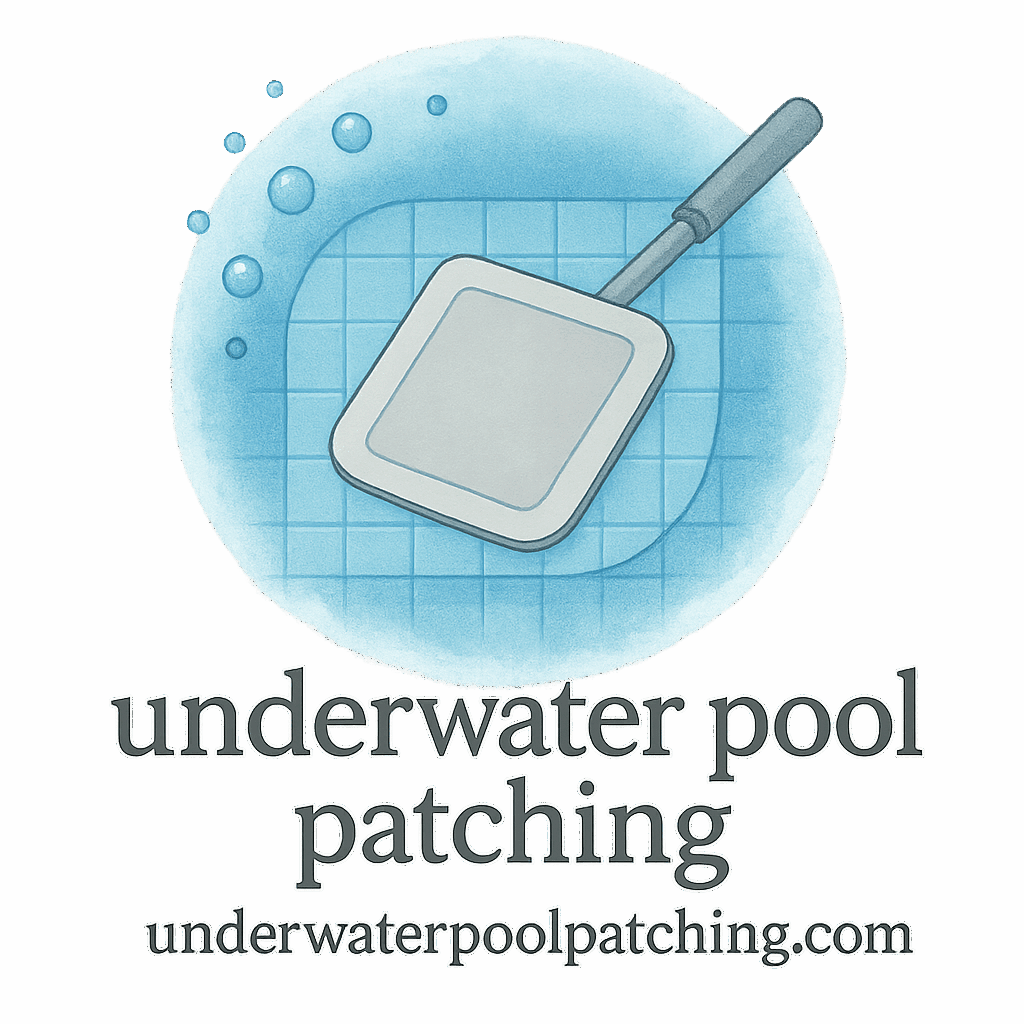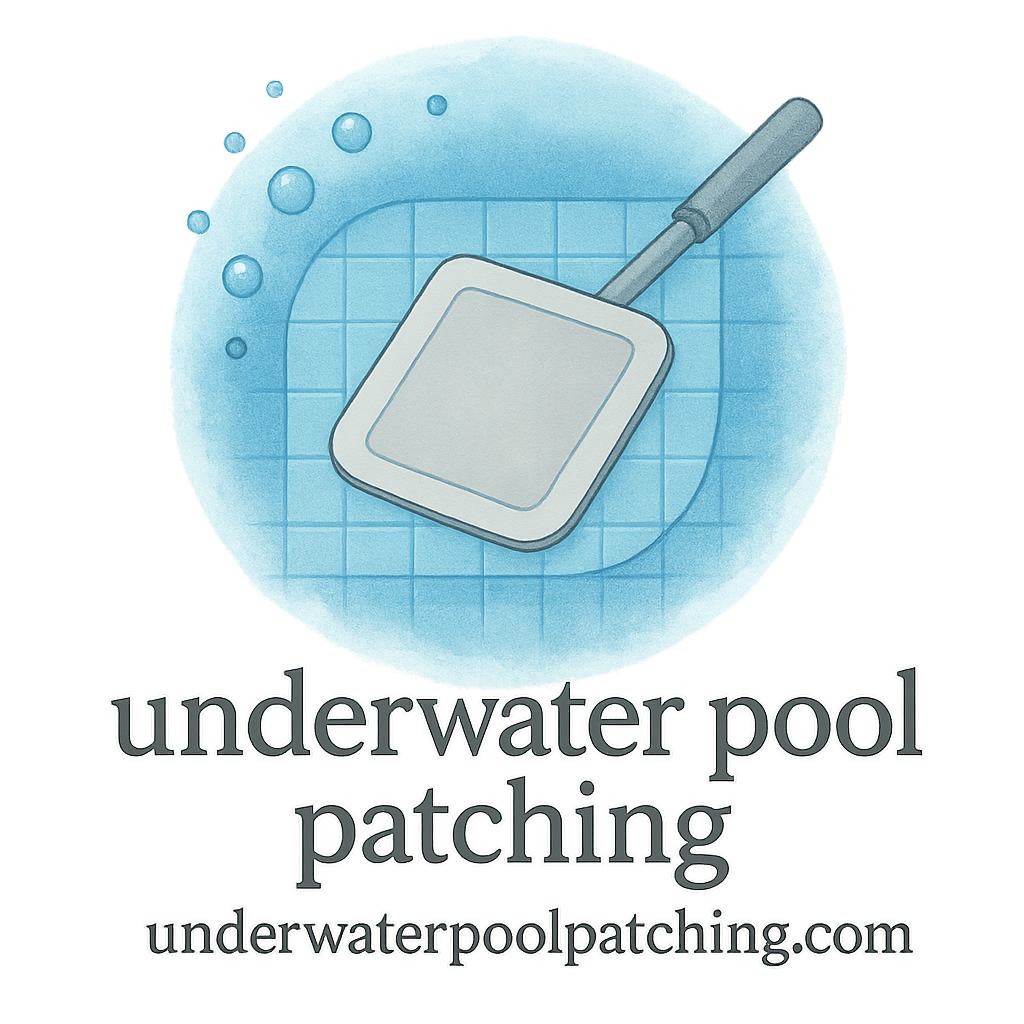Let’s face it—algae is the unwanted guest that refuses to leave your pool party. Not only does it make your swimming pool look like a science experiment, but it also seriously threatens your underwater pool patches. If you’ve spent time and money on repairs, you’ll want to protect them from this green menace. Today, we’re diving into 8 algae-fighting tips that will keep your pool—and your patches—crystal clear.
Why Algae Is a Major Threat to Underwater Pool Patches
How Algae Compromises Your Pool Patch
Algae may seem harmless, but it can slowly eat away at the seal of your pool patches. It creates an environment where bacteria thrive, which weakens the adhesion of the patch, especially if you’re using materials like vinyl or epoxy. Left unchecked, algae can even get underneath the patch and cause it to lift or peel.
If you’re curious about the types of patches and how they work, check out our detailed guide on patch types and materials.
Signs That Algae Is Damaging Your Patch
- Slimy surfaces
- Discoloration around the patch
- Bubbling or peeling of the patch
- Increased chlorine demand
Algae not only affects pool aesthetics—it can lead to costly re-repairs. Be sure to read our in-depth piece on inspection and diagnosis to identify problems early.
Tip 1: Brush and Vacuum Regularly
Importance of Manual Cleaning
Algae loves to grow in still, untouched areas—especially around pool patches where water might be stagnant. Regular brushing disturbs these colonies and makes it harder for them to settle.
Focus on Areas with Patches
Don’t skip over your patches during cleaning. Gentle brushing around them ensures algae won’t find a home near those vulnerable areas.
Pro Tip: Use a soft-bristle brush if you’ve recently applied a patch to avoid tearing or loosening it.
Tip 2: Maintain Proper Water Chemistry
Balanced pH and Chlorine Levels Matter
A well-balanced pool is algae’s worst nightmare. Keep your pH between 7.2 and 7.6, and chlorine levels around 1-3 ppm to deter algae growth and protect the adhesive integrity of your patch.
Avoiding Chemical Imbalance Near Patches
Harsh chemical fluctuations can weaken or discolor patch materials. Learn more about cost-effective chemical management and how it affects both your budget and pool health.
Tip 3: Use Algaecide Safely Around Patches
What Type of Algaecide Works Best
Look for copper-based algaecides or those labeled “non-foaming” for use in pools with patches. These are less likely to cause discoloration or residue build-up.
Application Tips to Prevent Patch Damage
Apply algaecide with your filter running and avoid direct application near recent patches. This reduces the risk of chemical erosion.
For more safe-use insights, visit our repair techniques guide.

Tip 4: Invest in Routine Inspections
Spot Issues Before They Escalate
Routine checks can save you from headaches. Algae blooms usually start in corners, seams, or under patches—places not easily seen during a quick glance.
Importance of Scheduled Maintenance
A solid maintenance and prevention plan keeps your patch in tip-top shape while preventing the conditions that allow algae to thrive.
Check our maintenance tag for more actionable tips.
Tip 5: Install a Quality Pool Cover
Keep Out Debris and Sunlight
Algae needs sunlight to grow. A good pool cover blocks UV rays and keeps leaves, pollen, and algae spores from making their way into your pool.
Reduce Algae-Friendly Conditions
Covers also prevent evaporation, which helps maintain chemical balance. If you’re patching on a budget, this is a simple yet powerful move. (Speaking of budget—our budget-saving tag has more cost-conscious ideas.)
Tip 6: Upgrade Filtration Systems
Why Strong Filtration = Less Algae
Your filter is the heart of algae prevention. A well-functioning system removes microscopic particles—including algae spores—before they attach to your pool wall or patch.
Keep Filters Clean and Maintained
Backwash or clean filters regularly. A dirty filter not only breeds algae but also circulates it back into the water.
Explore our tips tag for more insights.
Tip 7: Shock Your Pool Strategically
How to Shock Without Weakening Patches
Shocking the pool with chlorine helps kill persistent algae. Use a diluted solution and circulate it evenly—never pour it directly near patches.
Timing and Frequency Tips
Shock your pool after heavy use, rainstorms, or visible algae bloom. Doing it weekly during peak algae season is your best defense.
Learn how this fits into a broader maintenance plan.
Tip 8: Choose Durable, Algae-Resistant Patch Materials
Epoxy, Vinyl, and Their Benefits
Materials matter! Some patches are more prone to algae than others. Epoxy patches, for example, are smoother and less likely to harbor spores.
Check our full breakdown on epoxy options and what works best for different pool types.
Use Materials Designed to Resist Growth
Modern patches are often treated with anti-fungal or anti-algae coatings. Investing in quality materials can save you money and stress in the long run. For more info on material choices, visit our materials tag.
Bonus: Preventive Maintenance Plans Save Money
Subscriptions and Routine Services
A maintenance subscription service can keep your water algae-free and your patches intact—all while helping you avoid unexpected expenses.
Extend Patch Life & Pool Health
It’s like getting an oil change for your car—regular tune-ups extend the life of your patch and protect your initial investment.
Conclusion
Algae might seem like a small problem, but when it comes to your underwater pool patches, it’s a silent assassin. By brushing regularly, managing your chemistry, and investing in quality materials and maintenance, you can create a pool environment where algae doesn’t stand a chance. Remember—prevention is always cheaper than repair. So, keep your patches protected and your pool sparkling.
And don’t forget to explore our library of expert resources at underwaterpoolpatching.com to make smarter, money-saving decisions about your pool.
FAQs
1. Can algae really lift an underwater pool patch?
Yes, especially if it forms under the patch, where it weakens adhesion and causes bubbling or peeling.
2. How often should I inspect my pool for algae?
Weekly during swim season, and monthly during off-season, is ideal for early detection.
3. Is there a specific patch material best for resisting algae?
Yes—epoxy-based patches tend to resist algae better than vinyl or rubber options.
4. Will shocking the pool damage my patch?
Only if done improperly. Always dilute and circulate shock evenly to avoid direct contact with patches.
5. Should I avoid algaecides if I have a patch?
Not necessarily—just choose a non-foaming, patch-safe variety and apply with care.
6. Are there low-cost options to prevent algae growth?
Yes—regular brushing, balanced chemistry, and a good cover are effective and budget-friendly.
7. Can I use a robot cleaner near patched areas?
It depends on the patch type and age. Wait at least 48 hours after patching before using automatic cleaners.


